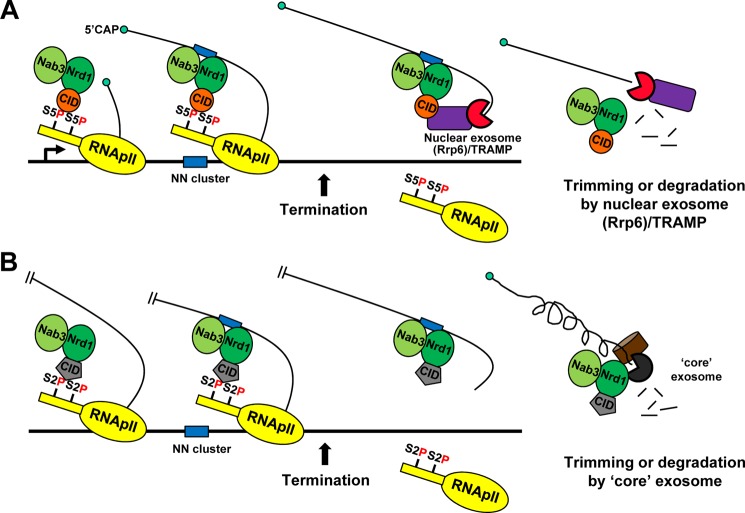FIGURE 7.
Model for coupling of termination and RNA processing by the Nrd1 CID. A, the Nrd1 complex binds to Ser(P)-5 CTD once transcription initiates. Soon after it recognizes an NN cluster on the nascent transcript, termination would occur, releasing the Nrd1 CID from CTD. The nuclear exosome (or Rrp6)-TRAMP complex is recruited to the Nrd1 complex via the CID either directly or indirectly, and processes the Nrd1-associated transcripts from the 3′-end. It is currently unknown how the interaction of Nrd1 CID with CTD and/or Rrp6/Trf4/Rrp4 is coordinated in the course of transcription. B, in Nrd1(CIDRtt103) cells, the Nrd1-dependent termination would take place further downstream where Ser(P)-2 predominates over Ser(P)-5. Trimming and degradation of Nrd1-terminated transcripts becomes dependent upon the “core” exosome (containing Rrp41 and Dis3) rather than the nuclear exosome-TRAMP complex, due to reduced interaction between the Nrd1 complex and Rrp6/Trf4/Rrp4.

